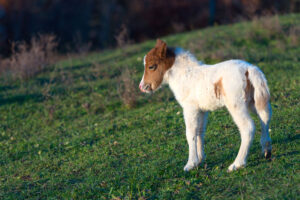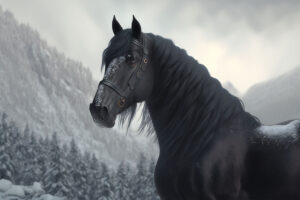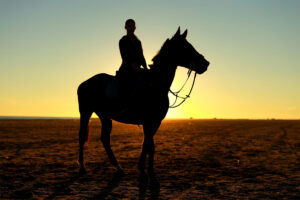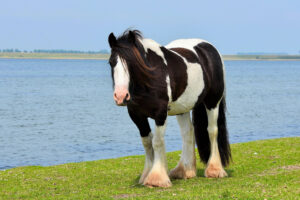
Determining the age of a horse is crucial for proper care and management. While physical characteristics and behavior provide some clues, examining the horse’s teeth is a reliable method to estimate its age. This article will guide you through the basics of horse dental development and help you understand how to assess a horse’s age by examining its teeth.
Horses, like humans, have two sets of teeth in their lifetime. The first set, called deciduous teeth or “baby teeth,” begins to emerge shortly after birth. By the time a foal is eight days old, it usually has a complete set of deciduous teeth. However, these teeth are temporary and gradually get replaced by permanent teeth.
Around two and a half years old, a horse’s permanent teeth start to emerge, indicating the transition from baby teeth to adult teeth. One of the first signs of this transition is the eruption of permanent incisors. By the age of five, most horses have a complete set of permanent incisors, signifying that they have reached full maturity.
The incisors, which are the front teeth of a horse’s mouth, play a crucial role in grasping and cutting grass and other forage. Examining the incisors can provide valuable insights into a horse’s age.
The central incisors are the first teeth to erupt in the lower jaw and usually appear when a foal is between six to nine months old. The intermediate incisors erupt next to the central incisors, typically between the age of one and a half to two and a half years. The corner incisors are the last to erupt, appearing when the horse is around three and a half to four and a half years old.
In addition to incisors, horses may also have canines and wolf teeth. Canine teeth are more commonly found in male horses, but some mares may have them as well. Wolf teeth, small and often vestigial, are located in the upper jaw near the first premolars. They usually erupt at around six to eight months of age and can be removed if they interfere with bitting or cause discomfort.
Apart from the incisors, there are other dental indicators that can help estimate a horse’s age. Galvayne’s groove, for example, is a groove that appears on the upper corner incisor of horses around ten years old. It starts at the gum line and gradually moves down, becoming fully visible by the age of 20. After that, it begins to disappear, and by the age of 30, it is usually gone.
As horses age, the angle at which the incisors meet changes. Young horses have a nearly straight incisor table, while older horses develop a more angled table.
In conclusion, understanding how to estimate a horse’s age through dental development is a valuable skill for any horse owner or enthusiast. By examining the horse’s teeth, particularly the incisors, one can gain insights into its age and make informed decisions regarding health care, training, and nutrition. It is always best to consult with an equine veterinarian for a more accurate assessment of a horse’s age, as tooth examination provides only a rough estimate.






